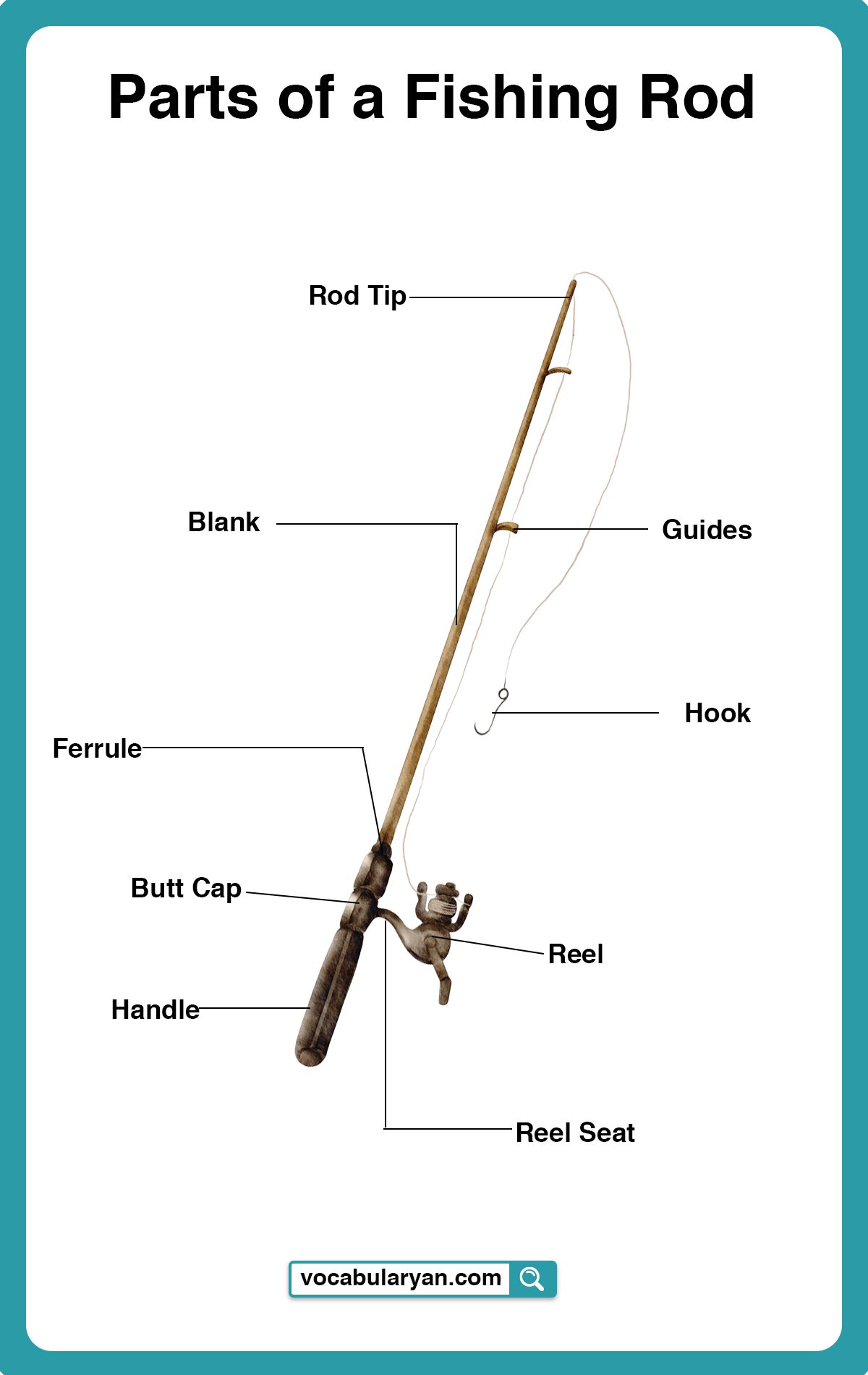Learning the parts of a fishing rod is essential for fishing enthusiasts and beginners alike. Key components include the handle (for grip), reel seat (holds the reel), and rod blank (the main shaft). Additionally, the guides (rings along the rod) direct the fishing line, and the tip is the flexible end for detecting bites. Understanding these fishing rod parts helps improve technique, equipment care, and clear communication during fishing activities. Whether you’re learning or teaching, this knowledge supports better fishing experiences.
Improve your English by learning more picture vocabulary on different topics by visiting our Picture Vocabulary category.
Names of Parts of a Fishing Rod
Rod Tip
The rod tip is the most flexible part at the very end of the fishing rod. It is crucial for detecting subtle bites from fish and contributes to better casting accuracy by responding quickly to movements.
Blank
The blank is the main body or backbone of the fishing rod, typically made from fiberglass, graphite, or carbon fiber. It determines the strength, flexibility, and durability of the rod for different fishing environments.
Guides
The guides are small circular rings evenly spaced along the length of the rod. They help direct and control the fishing line, ensuring smooth casting, reducing tangling, and maintaining even line tension when reeling in a catch.
Hook
A sharp, curved metal piece designed to catch fish by securing bait. When a fish bites, the hook pierces its mouth, allowing the angler to reel it in effectively without the fish escaping.
Reel Seat
The reel seat is the attachment point where the fishing reel is securely fixed onto the rod. It keeps the reel stable, ensuring proper balance and ease of use while casting and retrieving the line.
Reel
A mechanical spool device that controls the fishing line’s movement. It allows anglers to cast their bait far into the water and efficiently retrieve the line when reeling in fish, reducing strain.
Ferrule
A joint connection found in multi-piece rods that enables easy assembly and disassembly. It ensures that different sections of the rod fit tightly together while maintaining the rod’s overall strength and flexibility.
Butt Cap
The butt cap is a rubber or plastic cover at the bottom of the rod handle. It provides balance, reduces hand fatigue, and helps in applying pressure against the body when fighting larger fish.
Handle
The handle is the grip section of the rod, usually made from cork or EVA foam. It provides comfort, a firm hold, and control, preventing slippage during extended fishing sessions.

Interesting Facts About Fishing Rods
- Ancient fishing rods were made from bamboo, wood, and bone, dating back thousands of years.
- Graphite rods are known for their lightweight and sensitivity, making them a top choice for professional anglers.
- Some high-end fishing rods cost over $1,000 due to advanced materials and superior craftsmanship.
- The longest fishing rod ever recorded measured over 72 feet (22 meters) in length.
- The heaviest fish caught using a rod was a 2,664-pound great white shark, setting a world record.
FAQs
1. What is the function of guides on a fishing rod?
Guides help direct and control the fishing line, ensuring smooth casting, reduced tangling, and even line distribution when reeling in a fish.
2. How does a fishing reel work?
A fishing reel is a spinning spool device that allows anglers to cast their bait further and retrieve the line efficiently when pulling in a fish.
3. What material is best for a fishing rod?
Fishing rods are made from fiberglass, graphite, or carbon fiber. Graphite rods are lightweight and sensitive, while fiberglass rods are strong and durable for heavy-duty fishing.
You May Also Like




Leave a Comment